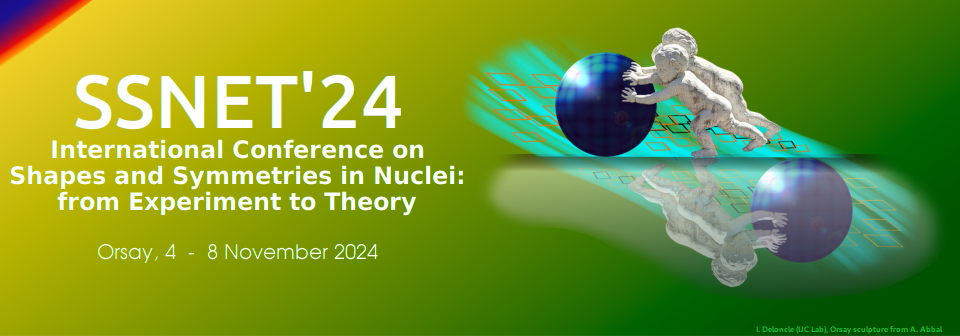Orateur
Description
The deformed relativistic Hartree-Bogoliubov theory in continuum (DRHBc) [1-2] considers the effects of axial deformation, pairing correlation and continuum in a self-consistent and microscopic way, and has been successfully applied in many studies on exotic nuclei. Recently, the DRHBc theory was extended to include the nuclear magnetism, i.e., the time-odd DRHBc (TODRHBc) [3], and to incorporate triaxial deformation, i.e., the triaxial RHB theory in continuum (TRHBc) [4]. Based on the DRHBc and TODRHBc theories, nuclear magnetism in the halo nucleus $^{31}$Ne is explored [3]. A possible binding mechanism from nuclear magnetism is revealed, contributions of the halo and the core to nuclear current are studied, and a layered feature in the spatial distribution of current is observed. Based on the DRHBc and TRHBc theories, the proton dripline nucleus $^{22}$Al is investigated [5]. The possibility of a proton halo is examined by analyzing the single-particle levels, density profiles and root-mean-square radii. It is found that triaxiality plays an indispensable role in the appearance of s-wave component for the valence proton in $^{22}$Al.
References:
[1] S.-G. Zhou, J. Meng, P. Ring, et al., Neutron halo in deformed nuclei, Phys. Rev. C 82, 011301 (2010)
[2] L.-L. Li, J. Meng, P. Ring, et al., Deformed relativistic Hartree-Bogoliubov theory in continuum, Phys. Rev. C 85, 024312 (2012)
[3] C. Pan, K. Zhang, and S. Zhang, Nuclear magnetism in the deformed halo nucleus $^{31}$Ne, Phys. Lett. B 855, 138792 (2024)
[4] K.Y. Zhang, S.Q. Zhang, and J. Meng, Possible neutron halo in the triaxial nucleus $^{42}$Al, Phys. Rev. C 108, L041301 (2023)
[5] K.Y. Zhang, C. Pan, S. Wang, Is there a proton halo in $^{22}$Al?, submitted to Phys. Rev. C (2024)

